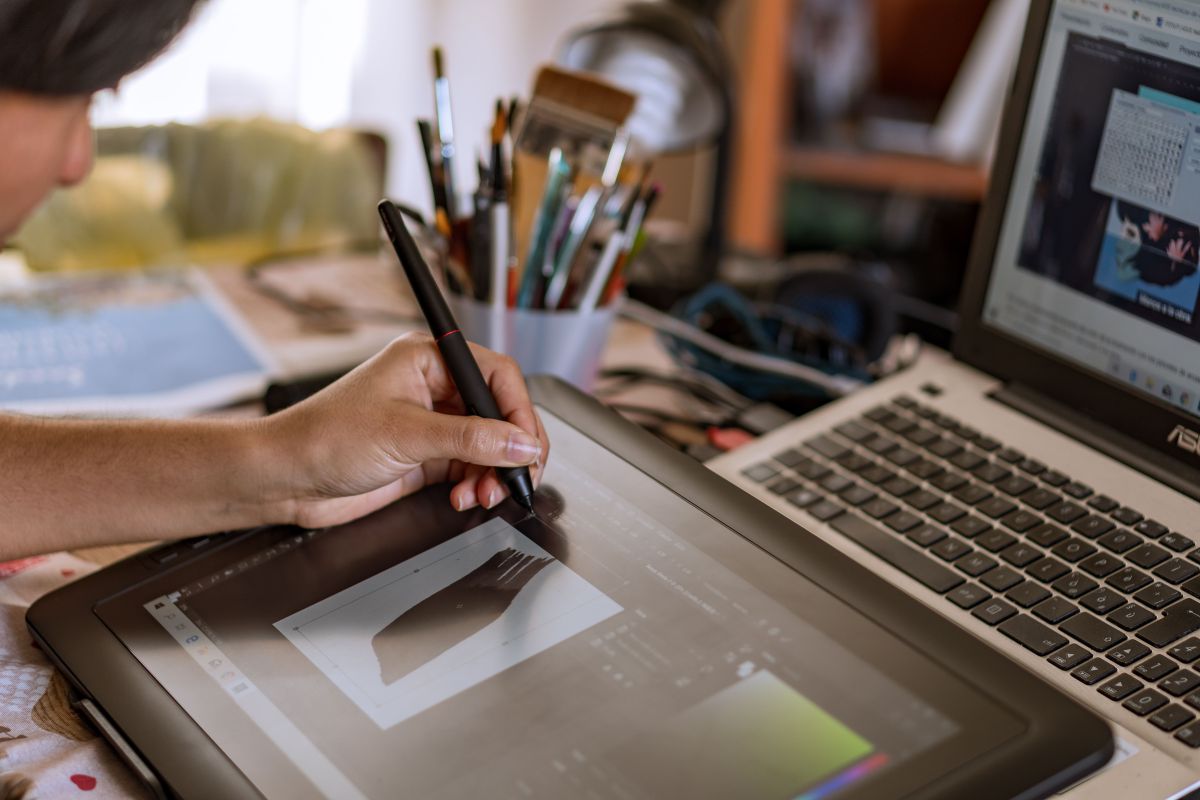
Animation Companies South Africa: What is Motion Graphics?
Have you ever sat down after a long day at work, remote in hand, ready to watch the next episode of Stranger Things? The familiar red letters expand across the screen, and that eerie hum kicks in, something you could probably pick out of a line-up. You might not have given much thought to what goes into creating that effect, or even what it is called. Maybe you are just too keen to get to the action. Well, simply put, it is called motion graphics. You have probably seen motion graphics hundreds of times without realising it. They are not quite cartoons, not quite special effects, and not just regular graphic design either. Somewhere in the middle, motion graphics serve a more practical role: helping people make sense of information quickly, and sometimes even making it easier to pay attention in the first place. Animation Companies South Africa work with motion graphics in all kinds of ways, whether it is for advertising, digital products, social content, or something more technical. But to understand how it all comes together, it helps to take a proper look at what motion graphics really are, where they came from, and why they have become so useful.
What is Motion Graphics?
Motion graphics is a form of animation that combines graphic design with movement. While traditional animation often tells stories using characters and plots, motion graphics tends to focus more on abstract shapes, typography, symbols, and images, all animated with movement and sometimes sound.
The key feature is movement. A still design is just graphic design. As soon as it starts moving, you are in motion graphics territory. Motion graphics are often used to explain ideas, add energy to content, or draw attention in a visual way. They are not always there to entertain, sometimes they are used to highlight data, explain a point, or even just make something look a little sharper.
The Evolution of Motion Graphics
The History of Motion Graphics
Motion graphics has roots as far back as the early 20th century. Some credit designers like Saul Bass, best known for creating famous title sequences in the 1950s and 60s, as early pioneers. His work on films such as Vertigo and Psycho showed how design and animation could work together to build mood and tone before a single line of dialogue was spoken. Before that, experimental filmmakers had already begun dabbling with kinetic typography and abstract movement. But it was expensive and labour-intensive.
The Digital Age of Motion Graphics
The arrival of digital editing and animation in the 1980s and 90s changed everything. Suddenly, designers had access to digital tools that made it easier and faster to create animations. TV channels started using motion graphics more regularly, not just in show openings, but for weather graphics, on-screen titles, and promotional bumpers. Animation companies South Africa and beyond began to develop dedicated motion design teams, and it soon became a standard part of commercial video production.
The Rise of Cinematic TV Titles
In the early 2000s, cinematic TV title sequences returned to the spotlight. Shows like True Detective used techniques such as double exposure and animated typography to create moody, atmospheric intros. These sequences showed that motion graphics could be expressive, even artistic, without relying on traditional storytelling or characters.
The Social Media and Advertising Boom
Today, motion graphics are everywhere, especially on social media. Scroll through Instagram, YouTube, or TikTok, and you will see animated posts, short explainer videos, and subtle motion effects in everything from cooking videos to business tips.
Because motion graphics are quick to understand and easy to adapt for different platforms, advertising agencies and content creators use them heavily. Animation companies South Africa play a key role in creating this kind of visual content for businesses, especially those looking to stand out online.
What is Motion Graphics Used For?
1. Advertising
Motion graphics are often used in adverts, both online and on TV, to highlight a product or message. They can be bold or minimal, depending on the brand. They help to hold attention, especially in short-form formats where time is tight.
2. Explainer Videos
These are short videos that break down an idea or service in a clear, visual way. Motion graphics is often used here because it allows complex topics to be presented without too much clutter.
3. Social Media Videos
Content made for platforms like Instagram or Facebook often relies on short, snappy visuals. Motion graphics work well in this space because it can be clean, fast, and highly adaptable to different formats and screens.
4. Website UX Design
On websites and apps, motion graphics add helpful movement, for example, when something loads or transitions. It can guide users smoothly without overwhelming them. Animation companies South Africa are now often involved in designing UX animations that improve the experience of using a site.
5. Logo Animations
A static logo is fine, but an animated logo gives a modern, tech-savvy feel. Motion graphics can make brand identities more dynamic by adding movement to logos for intros, outros, or when loading a webpage.
6. Title Sequences
TV shows, YouTube series, and even business presentations often use title sequences to set the tone. Motion graphics helps establish style and identity early on, whether it is serious, creative, or playful.
7. Infographics
Data does not always speak for itself. Animated infographics, motion graphics that show data visually, help make numbers and relationships easier to follow. Think charts that build over time or icons that move to support the information.
8. Broadcast Graphics
Live TV, news programmes, and event live streams often use motion graphics for things like lower thirds (the namebars that pop up), transitions between segments, and branded visuals.
9. Motion Typography
Also known as kinetic typography, this involves animating text to match mood, rhythm, or voiceover. When done well, it can guide viewers’ attention and highlight key messages with more impact.
How To Create Motion Graphics
Animation companies South Africa approach motion graphics through a thoughtful and structured process. It is not just about making things move, it is about making sure the movement supports the message.
1. Reference Gathering
Before anything is created, references are gathered to understand what styles, colours, and movements might suit the project. This helps build a shared visual language between the team and client.
2. Planning
From here, the team defines what needs to be communicated. This includes goals, duration, tone, and where the video will be used, social, web, or broadcast.
3. Storyboarding
A storyboard lays out the visual structure scene by scene. It is a bit like a comic strip, it gives the animators a clear sense of how the piece will flow.
4. Designing
Next, designers create the actual assets, illustrations, typography, icons, colour palettes, that will be animated. Everything needs to be visually aligned with the brand.
5. Animation
This is where it starts moving. Designers apply animation techniques like keyframing or tweening to the visual elements, often adjusting timing and rhythm to match the audio.
6. Implementation into Video
Finally, the motion graphics are integrated into the full video, whether that means overlaying them on footage, packaging them into a final render, or inserting them into an app or website.
Essential Considerations for Motion Graphics
Beyond techniques and processes, motion graphics call for certain principles and best practices that professionals keep front and centre when creating effective work.
Abstraction
Rather than being literal, motion graphics often rely on visual metaphors and abstract representations. This allows ideas to be communicated clearly without over-explaining.
Rhythm
The pace of transitions and animations matters a lot. Quick movements suggest energy, while slower ones suggest calm. Rhythm can help build momentum or draw attention to key moments.
Reading Time
Every viewer needs time to read and understand what is on screen. Designers make sure the pacing allows for this, too fast, and the message is lost.
Animation Techniques
Motion graphics can involve all sorts of methods: fades, scale changes, rotations, and more. The trick is knowing when to use them and how much is enough.
Audio Integration
Sound adds another layer, whether it is background music, a voiceover, or subtle sound effects. Good audio supports the visual message without competing with it.
Narrative Structure
Even if motion graphics are not telling a story in the traditional sense, it still needs structure. There is usually a beginning, middle, and end, a sense of movement from one idea to the next.
The Future of Motion Graphics
Motion graphics continue to grow and shift as technology develops. Here are a few directions it is heading in:
Real-Time Interactivity
With real-time rendering engines, motion graphics can respond instantly to user input. This opens up new options for interactive content and events.
Procedural Animation
This approach uses rules and algorithms to animate elements automatically. It allows animations to adjust themselves based on data or input.
Mixed Reality Integration
Motion graphics can now be used in mixed reality environments, like HoloLens or Apple’s Vision Pro, where digital content blends with the physical world.
Spatial Audio
With 3D sound, motion graphics can become more immersive, especially in games and virtual experiences.
Motion Graphics for Wearables
Smartwatches and similar devices use motion graphics to deliver short, clear visuals. The challenge here is working with limited screen space.
AI-Driven Automation
Artificial intelligence is starting to automate parts of the animation process, making editing faster or suggesting animation ideas.
Hyper Realistic Visual Effects
As computer graphics improve, motion graphics are crossing over into visual effects, with some animations looking as detailed and lifelike as film.
What It All Adds Up To
So, what is motion graphics? At its core, it is an animated design approach that combines movement, visuals, and sometimes sound to communicate something clearly. It has grown from early cinema experiments to a wide-reaching format used in advertising, TV, social media, apps, and beyond.
Animation Companies South Africa are not just following trends, they are helping shape how visual communication works in a fast-moving world. By understanding how motion graphics works, where it comes from, and where it is heading, we get a better sense of how it helps ideas move. Literally.
Of course, understanding what motion graphics is, is one thing. Using it well? That is where Sound Idea Digital comes in. Whether it is a product video, internal communications, or social content, we use motion graphics to build visual content that does its job. Reach out and let’s figure out how motion graphics can work for you.
We are a full-service Web Development and Content Production Agency in Gauteng specialising in Video Production, Animation, eLearning Content Development, Learning Management Systems, and Content Production.
Contact us for a quote. | enquiries@soundidea.co.za | https://www.soundideavideoproduction.co.za| +27 82 491 5824 |
Want to Keep Exploring
If you are keen to explore motion graphics a little further, we have a few articles you might find interesting. Whether you want to understand how motion graphics differ from traditional animation, discover the appeal of kinetic typography, or decide whether to use voiceover or text with motion graphics, these articles will give you plenty to think about.
South Africa Animation Studio: Are Motion Graphics and Animation the Same?
Motion Graphics Design: Kinetic Typography
Video Production Company: Voiceover or Text & Motion Graphics

